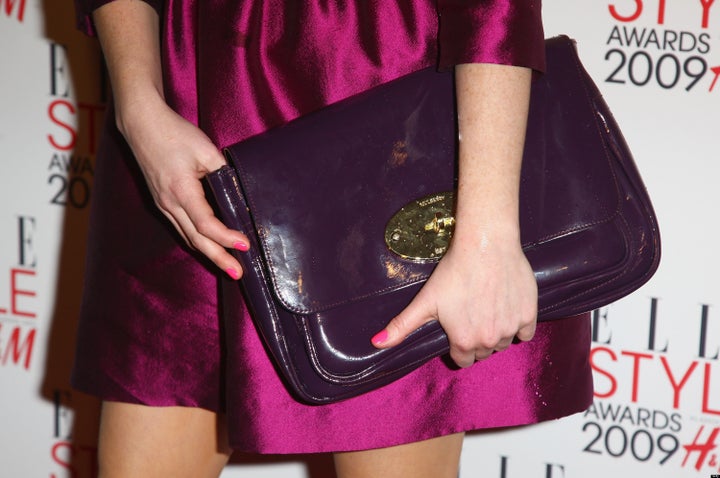
In the late '60s, I -- like every other self-respecting hippie teenage girl -- lugged my daily necessities around in a large Indian-print woven shoulder bag. It was a large satchel without pockets, organizers or even a top closure. When the knit strap broke, as it did with great regularity, my worldly possessions would scatter on the ground and I'd have to get down on my hands and knees to shovel them back into the satchel.
The satchel's greatest function was that it served to identify me. By carrying a bag like this -- and wearing the rest of the hippie uniform of bell bottom jeans and tie-dyed shirts -- the world knew who I was, what my politics were. Yes, I wore it with intention.
It occurs to me that my purses have defined me throughout life, starting with that Indian-print woven shoulder bag and its over-taxed knit strap. Gail Sheehy had her passages; I have my purses.
After college, I traded that Indian-print satchel for a back-pack and spent a year roaming through Europe, North Africa and the Middle East carrying my necessities on my back. Since hitch-hiking was how I frequently got around and Americans weren't always the most popular people in some of the places I traveled, I kept a Canadian maple leaf flag in the pack that I snapped on and off. Getting a ride as a neutral Canadian was easier than explaining Richard Nixon to an angry Israeli in the Negev.
I remember starting the trip carrying 40 pounds and as the year progressed, paring it down to a meager 12 pounds by the time I finally landed home. While that trip was about finding myself, I think it was also to some degree about losing myself -- or at least losing my trappings. At the end of the trip, I no longer needed a backpack. I also no longer ate red meat, I embraced meditation, and knew I needed to find an occupation in which I could make a difference. Journalism it was.
Upon getting my first reporting job, I switched to a small, tidy professional-looking bag. In it went makeup, which I was wearing for the first time. As my career and assignments progressed, my purses grew to accommodate my profession's accoutrements -- first a reporter's stenographer-size notebook, then a tape recorder and eventually a 35 mm camera with a spare lens in case I needed a wide angle. The bags grew sturdier as the weight of my career demanded.
Motherhood introduced me to tote-size purses that filled quickly with emergency snacks and "waiting" toys as I liked to call them -- things to occupy my kids while we waited for the food to come to our restaurant table, while we waited for the doctor to see us, while we waited for the traffic to ease and we could speed on to our destination.
The odd thing is that I kept carrying these tote-size bags long after my children needed my help to amuse themselves. Today, they get by with just their smartphones and they carry them themselves. They text, play video games and listen to their music from a device so small it would have gotten lost in my old Indian print hand-woven satchel, probably never to be seen again.
Last month, I decided to downsize. I bought a 9-inch cross-body bag that holds a lipstick, my car keys, phone and little else. It is a masterful feat of engineering with credit card slots and organizational pockets. I immediately dubbed it my "smart-purse." Oddly, it has no place to hold coins, but since not even parking meters require them anymore, I suspect that this was less social engineering and more a nod to our devalued currency. The one who probably suffers the most from my new purse is the homeless guy at the red light who I'm not ready to start handing dollar bills to, but was happy to empty coins into his waiting hand each morning.
I admit that at first, my new purse felt so small and light to me that I wondered if it was too young to be separated from its mother, but clearly a purse this clever was ready. I'm sure the next generation will have built-in GPS and a locator button that I press when I can't find it.
The new purse and I enjoyed a lovely few days together until a family trip to the Bay Area underscored its inadequacies. Smart-purses don't provide room for the extra sweaters or gloves the Bay Area requires be conveniently on hand. Nor do they have slots to accommodate the leftover dim sum from lunch or the wallet that my husband has for decades automatically dumped in my big zippered purse when we walk around cities where pickpockets lurk.
Truth is, the small purse may work for those who fly solo or who are ready to let go of the needs of a family. I am neither -- a lesson my latest purse has taught me. And I know for a fact that the homeless guy at the red light is much happier without the smart-purse coming between us.
